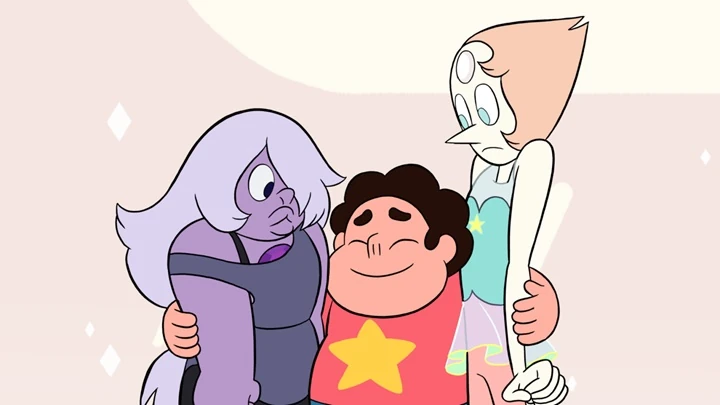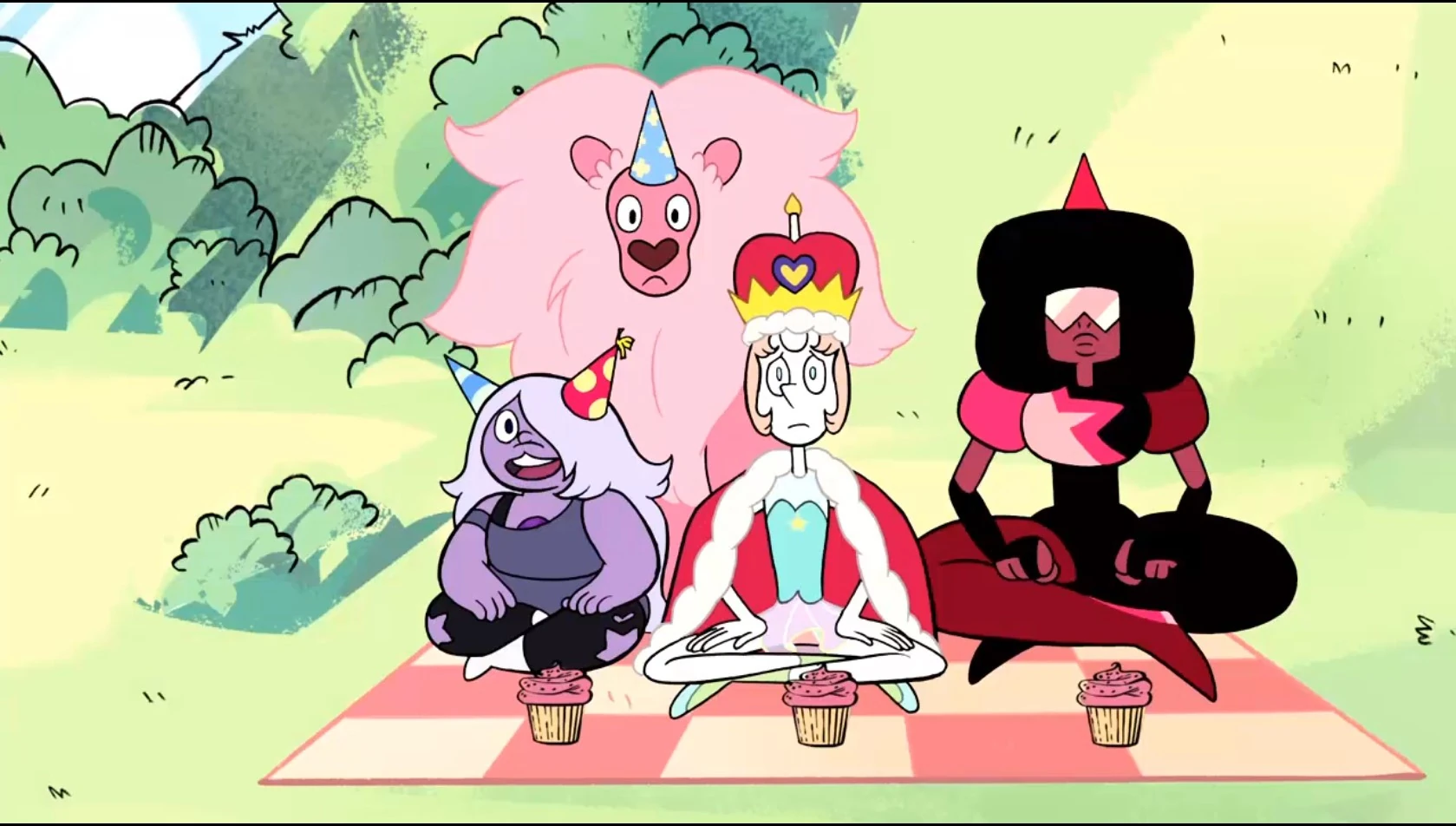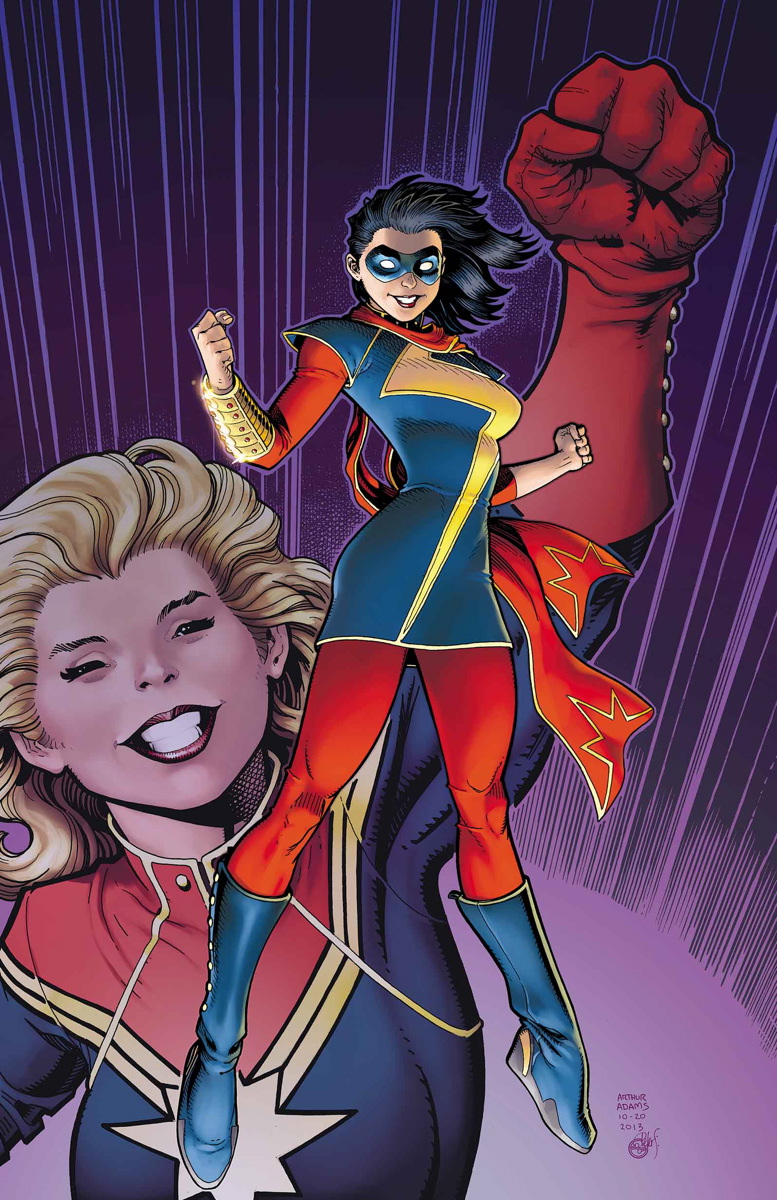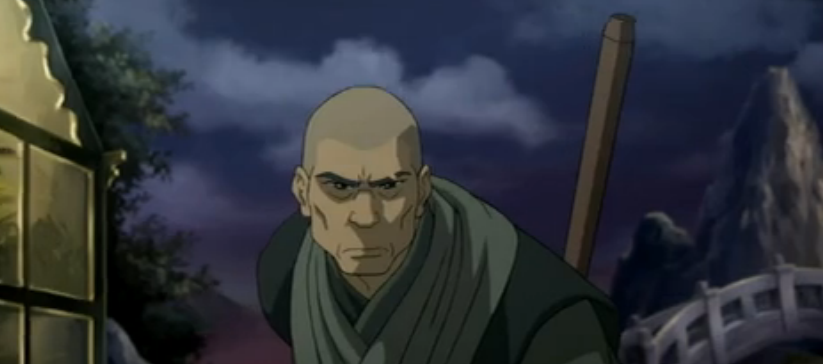It's a new year, and with every new year comes a stream of "Best of" lists, recounting what people liked about the last year. I figure that I like writing about stuff I watched or read, so I'd throw my hat in the ring, since my opinion matters and all. However, rather than narrow my focus (or lack thereof, as it were) to one medium like movies or TV or comics, I thought it'd be fun to focus in on various characters I liked, using them as a way to discuss products and projects that meant a lot to me this past year. I also decided to order them alphabetically, rather go through the arbitrary process of ranking them from best to worst. So, without further adieu, here are my Top 14 Characters of 2014, starting with...
The Artisans
from Red Sonja
"They could have lived lives of endless surplus. They chose friendship, instead. I knew they were remarkable. I didn't know I would grow to love them."
I generally don't give a damn about Red Sonja. I never got into the works of Robert E. Howard and probably never will, and that's okay. I get the appeal of the character and have no doubt that interesting stories could be told with her, but there aren't many things that can going to get me to read a Red Sonja comic book.
Having Gail Simone write it is, however, one of those things.
The current Red Sonja series is a blast; a down-and-dirty, swords-and-sorcery title that's funny, endearing, and action-packed, and the series's second arc is a showcase for the best of it. When a dying pharaoh announces he plans to have one last party before he kicks the bucket, he commissions the She-Devil with a Sword to recruit the world's greatest cook, animal tamer, courtesan, swordsman, stargazer, and dancer as the entertainment for the grandest sendoff Hyrkania has ever seen.
The artisans, naturally, bring out sides of Sonja that we don't see often. There's comedy in her inability to relate to Gribaldi the cook, her pride is questioned in a duel against Osric the swordsman, and she finds common ground in the heretical astrologist Plaitius. However, the strongest story came from Aneka the courtesan, who brought out Sonja's more feminine side and had her questioning where she would be if circumstances hadn't forced her to become a warrior.
Simone has since said that this arc is one of the best she's ever written, and I'm inclined to agree. The Artisans are some of the most fun and offbeat characters I've seen in a fantasy story, and I sincerely hope we see more of them in the series.
Barry Allen
from The Flash
"My name is Barry Allen and I'm the fastest man alive. A friend recently gave me the idea for a new name and something tells me it's gonna catch on."
I've written about the CW's Arrow before on this blog, but here's the quickie recap: I like the show, I'm interested in the story, but it's kind of a mess; a melodramatic action program that takes itself way too seriously, even though it's about a Robin Hood cosplayer fighting masked mercenaries with his much more interesting sidekicks, cool black dude and sexy hacker.
Thank heavens, then, for The Flash, a light, upbeat, optimistic, and most importantly, FUN series. It's a show that acknowledges that the fastest man alive and his rogues gallery are inherently ridiculous, and decides to have fun with it without sacrificing the drama. And at the center of it all is the scarlet speedster himself, Barry Allen.
Unlike big brother Oliver Queen, Barry is lighthearted and relaxed, aware of the dangers and responsibilities of having powers, but still acknowledging how cool it is to be quicker than quick. Actor Grant Gustin plays Barry to perfection: he's shy, he's easygoing, and, of course, he's fun. Yes, his scenes with love interest Iris can be tiresome, but he's still the ecstatic everyman who holds the show together.
The Flash is the best superhero show on TV right now, and I'm very happy that it exists.
Earl Tubb
from Southern Bastards
Earl: That lightnin' hit that tree for a reason. Whatever happens next, I'm glad it did.
Esaw: What?
Earl: I said I'm gettin' mighty tired of whoopin' your ass, boy!
2014 was a real strong year for comics, or at least it was for independent publisher Image Comics. Creator-owned books like
Sex Criminals, Saga, Pretty Deadly, Lazarus, Deadly Class, and some others that will show up later on the list all rode high, and among those fantastic titles was the chicken-fried crime drama from Jasons Aaron and Latour,
Southern Bastards, and the main character of its first arc, Earl Tubb.
Earl is an unconventional type of hero: an over-the-hill ex-soldier who left small town Alabama forty years prior and never looked back. He returns home to settle a few affairs, but seeing how its been taken over by football coach and brutal criminal Euless Boss spurs Earl into taking action to save the soul of his town. His initial story ends in an unexpected way as we learn more about Earl's reason for leaving Craw County and what becomes of his challenge to Coach Boss.
While the writing from Aaron is what defines Earl and his conflicted feelings about his home, attention must be paid to Latour's design of the character. Earl looks like his face is carved from stone, but it's still plenty expressive, showing his intensity, his kindness, and more than anything, his weariness with his life and with Craw.
Earl Tubb's story is the story of Craw County, and I'm looking forward to where it goes next.
Monsieur Gustave H.
from
The Grand Budapest Hotel
"You see, there are still faint glimmers of civilization left in this barbaric slaughterhouse that was once known as humanity. Indeed that's what we provide in our own modest, humble, insignificant... oh, fuck it."
The Grand Budapest Hotel may be my favorite film of the year, which is saying something in a year that featured
Captain America: The Winter Soldier, The Lego Movie, and
Gone Girl. Still, it's a quirky feature with a lot of comedy and a lot of heart, and holding it all together is the concierge of the titular hotel, Monsieur Gustave H.
M. Gustave is an odd sort, not only because of the immense pride he puts into maintaining the hotel, but in his every affectation. Gustave is always straight-laced and always mannered, creating an upper-class persona so precise that it has to be manufactured. It's in these moments, between the generous spritzes of perfume and the poetry readings during dinner, that we see who the concierge really is: a once-poor boy who now rubs elbows with the European aristocracy and HAS to act like it. That contrast is interesting enough, but he comes truly alive thanks to the wholehearted commitment and impeccable timing of actor Ralph Fiennes.
M. Gustave seemed to keep the Grand Budapest alive and running through expertise, professionalism, and sheer force of will. He was a clever chap and force to be reckoned with, and one of the best performances I saw this year.
Kamala Khan
from Ms. Marvel
"Why am I the only one who gets signed out of health class? Why do I have to bring pakoras to school for lunch? Why am I stuck with the weird holidays? Everybody else gets to be normal. Why can't I?
Marvel Comics has done interesting things with it's Marvel NOW! and All-New Marvel NOW! line of books. Classic characters have been reinvented in new ways, such has having the mantle of Ghost Rider being passed to a Latino teenager, moving Daredevil from New York to San Francisco or giving Rocket Raccoon his own solo title. However, perhaps their biggest publicity move was taking the name "Ms. Marvel" and giving it to someone entirely new and different: Kamala Khan, a Pakistani American teenager from Jersey City.
What works about Kamala is that every detail makes her different than most of the reading audience, but still makes her identifiable and relatable. She has a hobby nobody around her seems to get (superhero fandom), she has stern but loving parents, and most of all, she feels weird and alienated from her peers...just like everyone else. Kamala really is the Peter Parker for the 21st Century, a nerdy everyperson who falls ass-backwards into superpowers and struggles in learning how to use them for good, and it's exactly that struggle that makes her interesting.
It's very telling that Kamala's first instinct with her shapeshifting powers is to act as her favorite superhero, Captain Marvel, only to later decide that she's better off saving New Jersey as herself. Kamala is best when she's being Kamala, and we wouldn't have it any other way.

Lester Nygaard
from
Fargo
"I’m not sure what it is that you’ve had against me since day one, but I’m not the person you think I am, this kind of monster."
FX's
Fargo was the best series that you should have watched but probably didn't. Based on the Oscar-winning movie of the same name,
Fargo was a funny, dramatic, tense, dark, and ultimately earnest crime story about two criminals and the officers working to bring them to justice. One of these criminals was the cowardly Lester Nygaard.
When Lester is first introduced, he's downright pitiable; working a dull job as an insurance salesman, still harassed by his high school bully, overshadowed by his brother, and henpecked by his wife. However, a few unfortunate words and regrettable actions send Lester down a path of deception and murder, as he tries to dodge agents from a criminal syndicate and stay under the radar of the Bemidji PD.
A big part of what makes Lester work is the actor chosen to play him: Martin Freeman. Freeman has built a career on playing the relatable everyman, thrust into larger-than-life situations. Whether he's Tim Canterbury, Arthur Dent, John Watson, or Bilbo Baggins, we as the audience count on Freeman to be our eyes and ears into whatever strange world we're entering.
Fargo takes that assumption and flips it on its head. Lester begins as the relatable everyman, but his foray into criminality ends up consuming him, so much so that by season's end you hope against all odds that he be punished for his transgressions. It's a clever subversion of audience expectation and a real showcase for Martin Freeman, who really brings Lester's machinations to life, all while nailing the midwestern accent.
Lester Nygaard's ten-episode story gave us an interesting and concise villain's journey, a fall from grace the likes of which I doubt we'll see again anytime soon.
Maybe season 2.
Lorne Malvo
from
Fargo
"You problem is you spent your whole life thinking there are rules. There aren't. We used to be gorillas. All we had is what we could take and defend. Truth is you're more of a man today than you were yesterday."
That's right,
Fargo gets two characters on the list. Why? Because it's
Fargo, that's why!
If there's anything
Fargo (the movie) lacked, it was an ideological villain. Police chief Marge Gunderson may have been an icon of basic human decency, but the movie's antagonists were a collection of petty criminals and shortsighted, selfish people, hardly fitting matches for such a force of goodness in the world.
Fargo (the show) sought to correct this through its central antagonist, Lorne Malvo.
Malvo's is largely a mystery, a hired gun and contract killer whose work apparently spans the country. What we do know is his belief system: Malvo is a nihilist who believes human beings are inherently selfish, violent, and wicked, and he does his best to subtly bring these traits out in anyone he crosses. Malvo is an agent of chaos who can start an argument or silence naysayers with only a few words, and Billy Bob Thornton does an exquisite job bringing his charisma and menace to life. However, there's something almost tragic to Malvo, a self-inflicted loneliness his contempt for humanity causes. The only time he ever really connects to another person is when he's pushing Lester to embrace his inner villain, a gesture which he comes to regret as the story progresses.
Lorne Malvo was more than just a villain; he might have been the devil himself, made flesh and sent to Minnesota just to mess things up. He was clever, he was terrifying, he was engaging, and he'll be hard to top come our next trip to Fargo.
Luci
from
The Wicked + the Divine
"You're the girl I took backstage at the little sun god's performance, aren't you? Now I know you must feel terribly teased we didn't consummate our flirtation, but this screen makes it somewhat tricky. Intangible cunnilingus is beyond even my abilities. That said, I've never tried. They do say I have a wicked tongue..."
Let's go from one devil to another, although this one's a bit more literal.
In the world of Kieron Gillen and Jamie McKelvie's new series from Image Comics, there exists a phenomenon called Resurgence. Every ninety years or so, twelve gods and goddesses from various pantheons return to the mortal plane in human form. They are adored or despised for a period of two years before dying out. In the modern era, the twelve have come together to form a London-based coalition of musicians appropriate called "the Pantheon". Among these twelve is the First of the Fallen, the Adversary, the Old Serpent, the Prince of Darkness (or Princess, as it were), Luci.
With a David Bowie-esque wardrobe and a love of sex, drugs, and rock n' roll, Luci was instantly the most interesting and subversive member of the Pantheon, unpredictable and willing to use her godlike powers in public. However, her brash actions end up landing her in jail when she appears to murder a judge, despite her claiming innocence. For the Pantheon's biggest fan, Laura, the question remains: who was the real killer? Or is Luci just telling a lie, as the devil has been known to do?
Luci's eye-rolling snark made her a fun character, but it's the humanity underneath that makes her. Despite her...let's say, "hedonistic" lifestyle, she resents being typecast as the villain, and that no one will ever really trust her in the brief time she'll spend on this Earth. Luci may act aloof, sarcastic, and above it all, but in the end she is, tragically, human.
Is Luci a goddess amongst men? Is she a human elevated to a higher plane? Is she something in between? In the end, she's a soul trying to find her own piece of happiness on this Earth. In the end, she's just like us.
The Lumberjanes
from Lumberjanes
"FRIENDSHIP TO THE MAX!!"
If you told me last year that one of my favorite comic books would be an all-ages series with an all-female cast, I would've said "Yeah, that sounds like something that could happen."
I've already talked about this series on this blog. You can read the full version
here. Suffice it to say that I love these lasses. I love their reckless optimism and the capability they have to back it up. I love the uniqueness of the characters and how they each bring something special to the table. I love Jo's intelligence, April's strength, Molly's creativity, Mal's pragmatism, and Riley's boundless energy. I love that the series can get bizarre and serious at times without losing it's sense of humor or adventure. I love these girls and I love the book they're in.
Lumberjanes was originally intended to be an 8-issue miniseries, but thanks to support from fans and good sales numbers, it's now an ongoing. That's a rare feat in the comic book industry, and especially rare in a book not published by the Big Two or Image. Clearly, the continuing adventures of the girls of Roanoke cabin has struck a nerve with readers, and thanks to that, we'll be seeing more of their adventures in the future.
Moon Knight
from Moon Knight
"I've died before. It was boring, so I stood up."
Moon Knight is an odd sort of character, someone whom Marvel Comics hasn't quite known what to do with. Once a soldier-of-fortune, Marc Spector was betrayed by his partner and left for dead at an Egyptian archaeological dig. He was saved by Khonshu, the Egyptian god of the moon, on the condition that he act as the deity's avatar on Earth. Spector agreed, and upon returning to life and returning to America, used his mercenary money to equip himself with a new identity and crimefighting technology, and became the Moon Knight, protector of those who travel at night.
Moony's has starred in a few series since his debut in 1975, and while he's remained a fixture in the Marvel Universe, he's never exactly stuck out as a solo figure. That is, until his own All-New Marvel NOW! series from Warren Ellis, Declan Shalvey, and Jordie Bellaire. The series puts Spector back in the streets of New York to take on threats from the uncommon (e.g. a vengeance-fueled sniper, a rival vigilante) to the weird (punk rock ghosts, a mushroom-powered dream walker) to the human (gangsters and kidnappers), all the while dressed to the nines in a fancy new suit. Ellis also explains away Spector's multiple personalities without outright dismissing them, and gives Moony an arsenal of mystical weapons and technological marvels.
Ellis and Shalvey left the book after issue six, handing the reigns over to Brian Wood and Greg Smallwood. However, the two left behind six one-and-done stories of a mad mercenary's adventures in the Big Apple, filled with creative events and fantastic artwork. It's weird, it's trippy, and it's definitely worth a read.
Rocket Raccoon
from
Guardians of the Galaxy
"He thinks I'm some stupid thing! He does! Well I didn't ask to get made! I didn't ask to be torn apart and put back together over and over and turned into some little monster!...he called me vermin! She called me rodent! Let's see if you can laugh after fix or six shots to your frickin' face!"
Marvel Studios proved itself unstoppable in 2014, not only by turning its own universe on its head in
Captain America: The Winter Soldier, but also by headlining a movie featuring the unlikely friendship between a talking tree and gun-toting raccoon. Lo and behold,
Guardians of the Galaxy became one of the biggest hits of the year, and Star-Lord, Gamora, Drax, Groot, and Rocket Raccoon became household names.
Rocket in particular struck a chord with me, a character partially named after a Beatles song and who could've easily been a joke wound up being the heart and soul of the feature. For all his bluster, his violence, his prickly demeanor, and his resentment towards the rest of the universe, there's a weakness to Rocket. He's insecure about his victimization and self-hating over what's become of him. However, his loyalty to his friends and his kinship with Groot shine through, and make him, ironically, one of the most human characters in the galaxy.
Thanks to Bradley Cooper, Sean Gunn, James Gunn, Nicole Perlman, and a team of the best special effects artists in the world, we got to see a character unlike anything ever seen before, and for that I'm grateful and looking forward to what does in the sequel.
Suzanne "Crazy Eyes" Warren
from
Orange is the New Black
"I know something about loving people who aren't smart enough to be loved back. I have a little secret I can tell you: They don't deserve it!"
I've always had more interest in supporting characters than main ones. Maybe I feel an odd kinship with people who don't often get the spotlight, maybe I just like someone who doesn't (conciously or otherwise) insist on being the center of attention. Whatever the reason, I like them.
Orange is the New Black seems to agree with my feelings, since in its second season, the drama surrounding series main Piper Chapman paled in quality compared to the mounting gang war going on between the made women of Litchfield Correctional. And caught up all of it was poor little Suzanne "Crazy Eyes" Warren.
Crazy Eyes began her tenure on
OitNB pretty much as a punchline. For Piper, she was another threat to face in prison, but unlike well-connected head chef "Red" Reznikov, sleazy CO George Mendez, or homophobic and misogynistic counselor Mr. Healy, Crazy Eyes was just a nuisance. She immediately pegs Piper as her new prison wife and reacts to Piper's rejection by peeing in her bunk. However, as the season progressed, odd details about Crazy Eyes emerged: her love of Shakespeare, her being adopted by white parents, and her desire to perform onstage despite her crippling stage fright. A later episode has her asking Piper why everyone calls her by her nickname, and it's heartbreaking.
Season 2 builds on that groundwork by adding actress Uzo Aduba to the main cast, giving her a flashback episode, and making her an integral part of the storyline. When drug kingpin Vee Parker returns to Litchfield, she immediately starts a new tobacco-smuggling enterprise and enlists the aid of the other black inmates, with Suzanne as her first recruit. Vee's motherly affectation instantly charms Suzanne and her need for affection, and she spends the season as Vee's backup, muscle, and surrogate daughter. Her trust in Vee is so deep that it's all the more heart-wrenching when she's betrayed by her.
Suzann Warren proved that with the right combination of writing and acting, even the most inconsequential character can become a great source of insight and drama. While she may not have always been tactful, Suzanne is a kind, loving, and fiercely loyal person.
Orange is the New Black touts that "Every sentence is a story", and Suzanne's is one of a flawed person who can still express the best of humanity.
The Twelfth Doctor
from
Doctor Who
"Ooooh that's good, I'm Scottish! Scottish! I am...Scottish! I can complain about things, I can really
complain about things now."
In his fifty plus years of wandering space and time, the Doctor has worn many faces and many identities. He's been an old man, an oddball, an action man, a bohemian, a nice guy, an egotist, a manipulator, an adventurer, a soldier, a veteran, a professor, and a clown. So with his eleventh (technically thirteenth) regeneration, what is the Doctor now? A curmudgeon. And he's great.
Peter Capaldi's Twelfth Doctor seems almost like an overcorrection for the past nine years of the show. Doctors from the revived series Christopher Eccleston, David Tennant, and Matt Smith were all defined by their youthful energy (particularly Smith, who at 25-years was the youngest actor to play the role). Capaldi brings the Doctor back to his roots with a decidedly older incarnation, still full of vim and vigor but less prone to romance with companions and bouts of dancing.
There's also a certain cynicism Twelve has that the more optimistic Doctors lacked. He's doesn't waste his time giving false hope or trying to save doomed victims and rationalizes it as pragmatism, almost like he's sacrificing one to save many (even though he isn't really). More than that, Twelve doubts
himself. While he's still condescending to most other races in the universe, Twelve recognizes the flaws in his own personality and the mistakes he's made. That's the question that hovers over this Doctor: Is he so devoted to fixing those mistakes that he's willing to make a few more to correct them? In trying to do good, is he (pardon the pun) alienating himself from his friends and his adopted homeworld?
And yet there's still positivity to him. His affection for his companion Clara Oswald is absolutely genuine (When Clara tries and fails to use dirty tactics to elicit his help in raising her dead boyfriend, he agrees to help anyway, saying "Do you think I care so little for you that betraying me would make any difference?"), he still does anything he can to save as many people as he can, and he even still has moments of childish glee to him (e.g. dueling Robin Hood with a spoon, flying Santa's sleigh on Christmas night) (boy, this season was big on the Doctor meeting fictional characters, ennit?).
Twelve was something both old and new altogether. He may a tougher exterior then we're used to, what with his bitter Scottish accent and his "attack eyebrows", but at his core, he's the same doctor we've known and loved for years, and I'm looking forward to seeing what becomes of him in the series to come.
Zaheer
from
The Legend of Korra
"Maybe I forgot to mention something to you: I don't believe in queens. You think freedom is something you can give or take on a whim? To your people, freedom is just as essential as air, and without it there is no life. There is only darkness."
Avatar: The Last Airbender was one of the best animated series of all time, a sweeping epic full of fantastic characters, a rich and complex world, dynamite action, and memorable villains. It's sequel series, The Legend of Korra...isn't. Don't get me wrong, it's not bad, but coming off of Airbender, it's clear where the best of Michael Dante DiMartino and Bryan Konietzko's writing went. Still, there's a lot to like about Korra, particularly in its latter two seasons. One of those things is the big bad of season three, Zaheer.
Zaheer brought a lot of new to the world of
Avatar. He was the first villainous airbender in the franchise, and showed just how deadly someone with those powers could be (the above quote comes as he literally pulls the air out of a woman's lungs). More than that, Zaheer was the first time I believed a villain in
Avatar was sincere in their beliefs.
Airbender's villains, the Fire Nation royal family, were imperialists hoping to live up to a legacy of conquest.
Korra's inaugural bad guy Amon wanted to rid the world of superpowers so everyone could be equal, save himself, who would keep his own abilities. Sophomore villain Unalaq wanted to turn the world into a theocracy with himself as pope. All of them were interesting (except Unalaq), but I always thought their ideals were a smokescreen for their goals of attaining power.
But Zaheer was different. He was an anarchist, believing that the world suffered because of the pettiness and selfishness of leaders and monarchs, and frankly, he had a point. Whether it was oppression from Fire Lord Ozai, the machinations of Earth Queen Hou-Ting, or the incompetence of Republic President Raiko, a lot of the world's leaders hadn't done a good job of taking care of it. However, Zaheer also believed that it was the Avatar's duty to maintain balance through deposing leaders, and when Korra refused to side with him, she was to be deposed as well.
Aided by some gorgeous animation and a grounded, menacing performance from Henry Rollins, Zaheer became the best villain in
Legend of Korra and high watermark for the franchise as a whole. He was a fierce warrior and a firm believer, and a fascinating character to see fight the good guys.
* * * * * *
And there's my list. Here's to 2014 and an even better 2015. Thanks for reading and I'll see you next time!





.PNG/revision/latest?cb=20150311214043)


.PNG/revision/latest?cb=20150311195732)
.PNG/revision/latest?cb=20150116004107)


.PNG/revision/latest?cb=20141025175936)


















